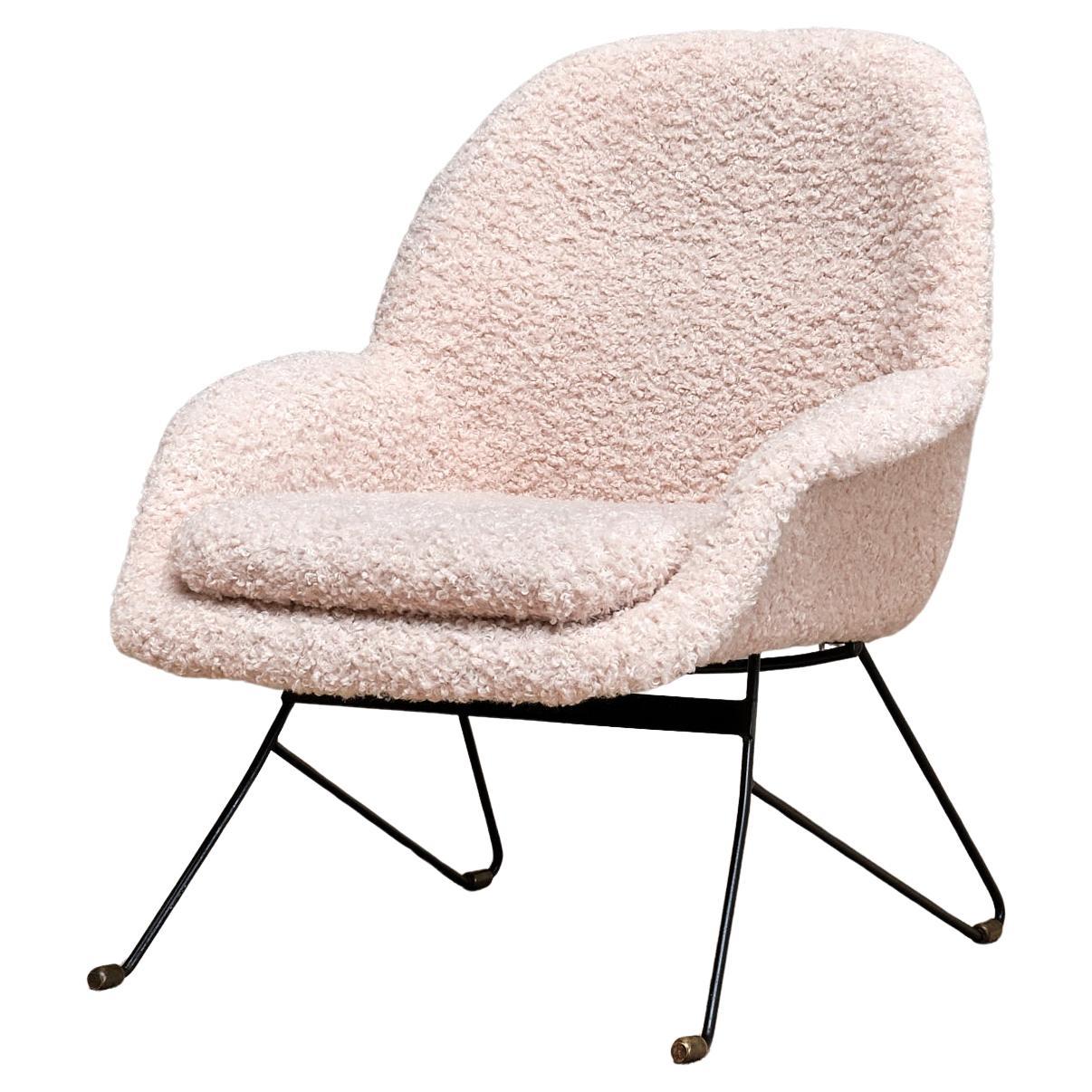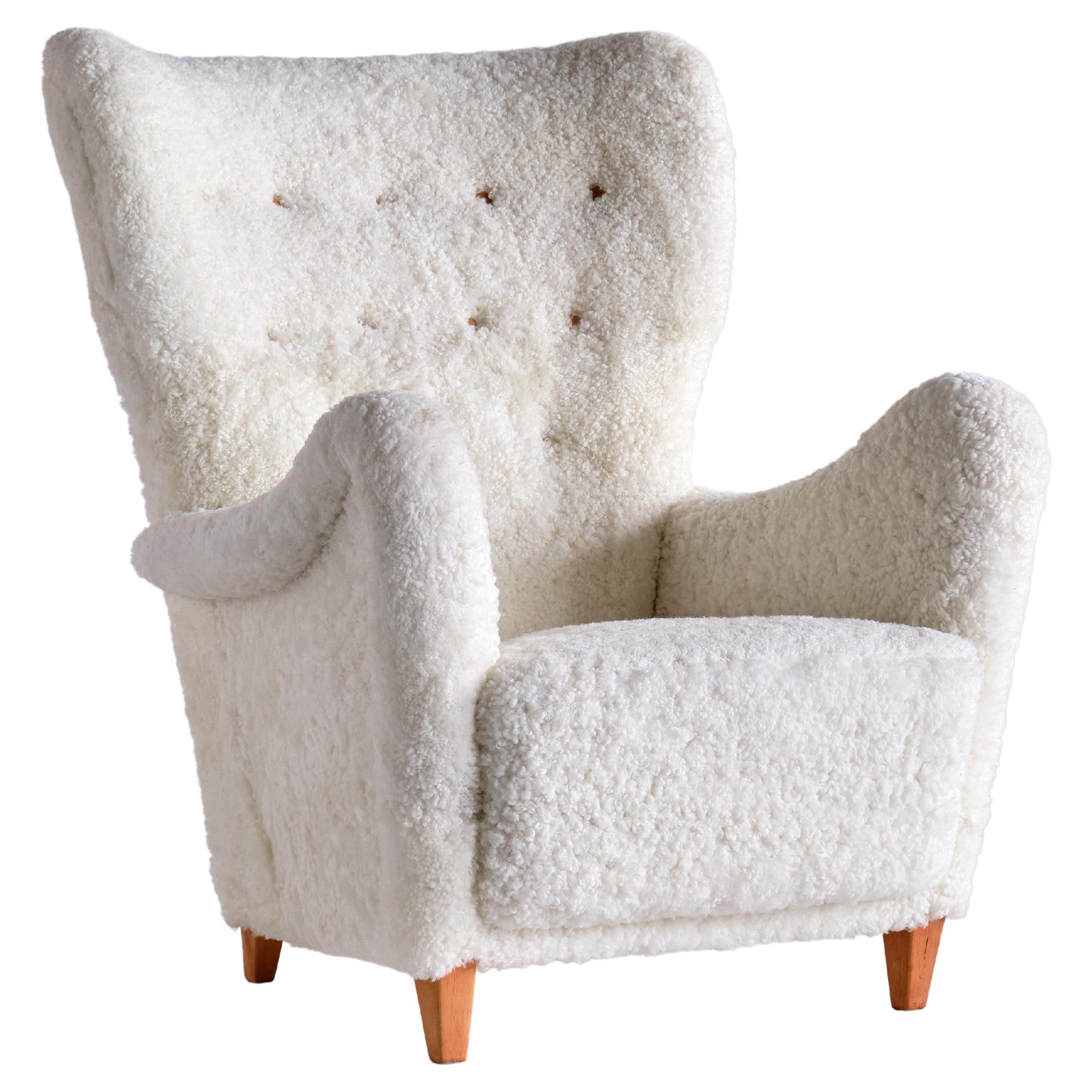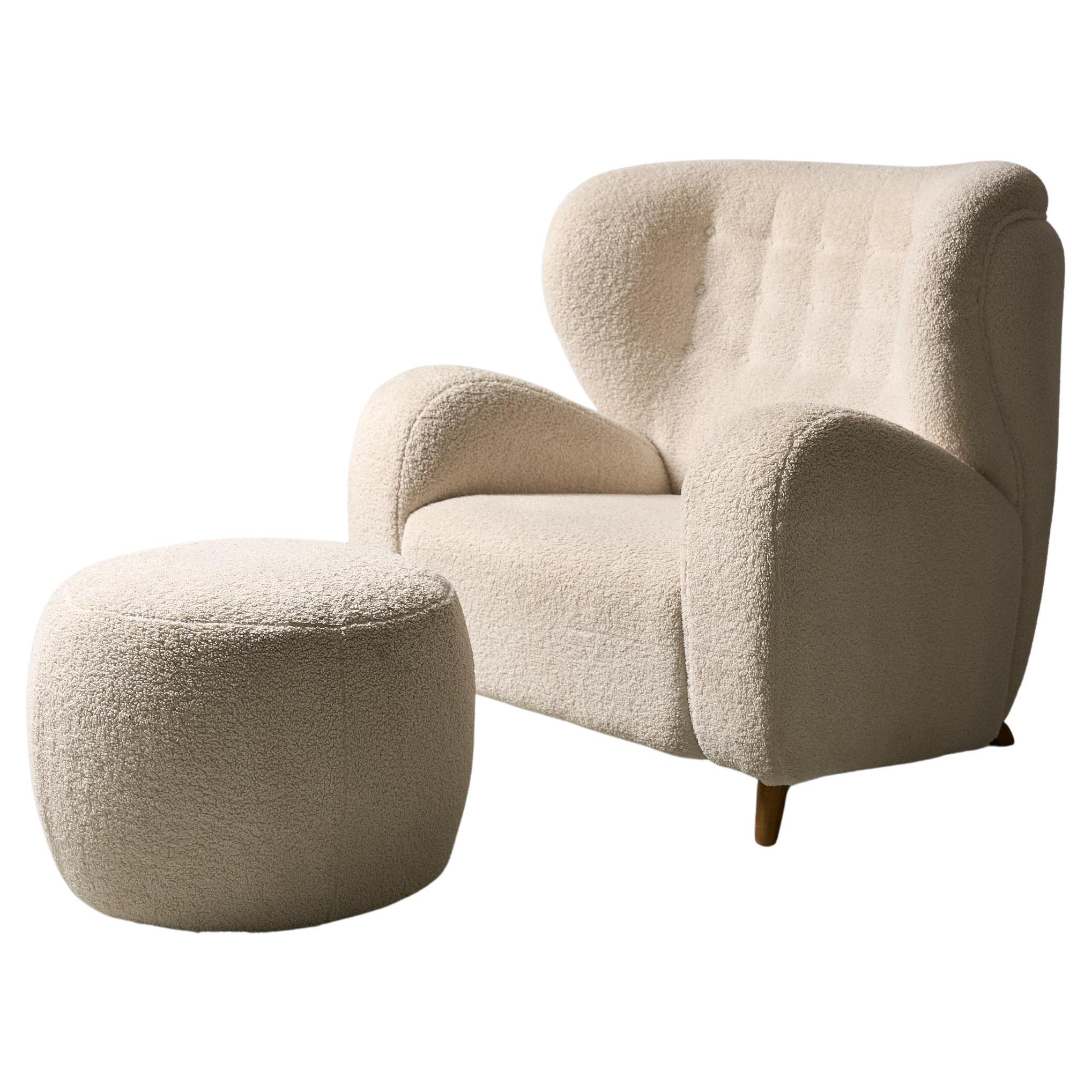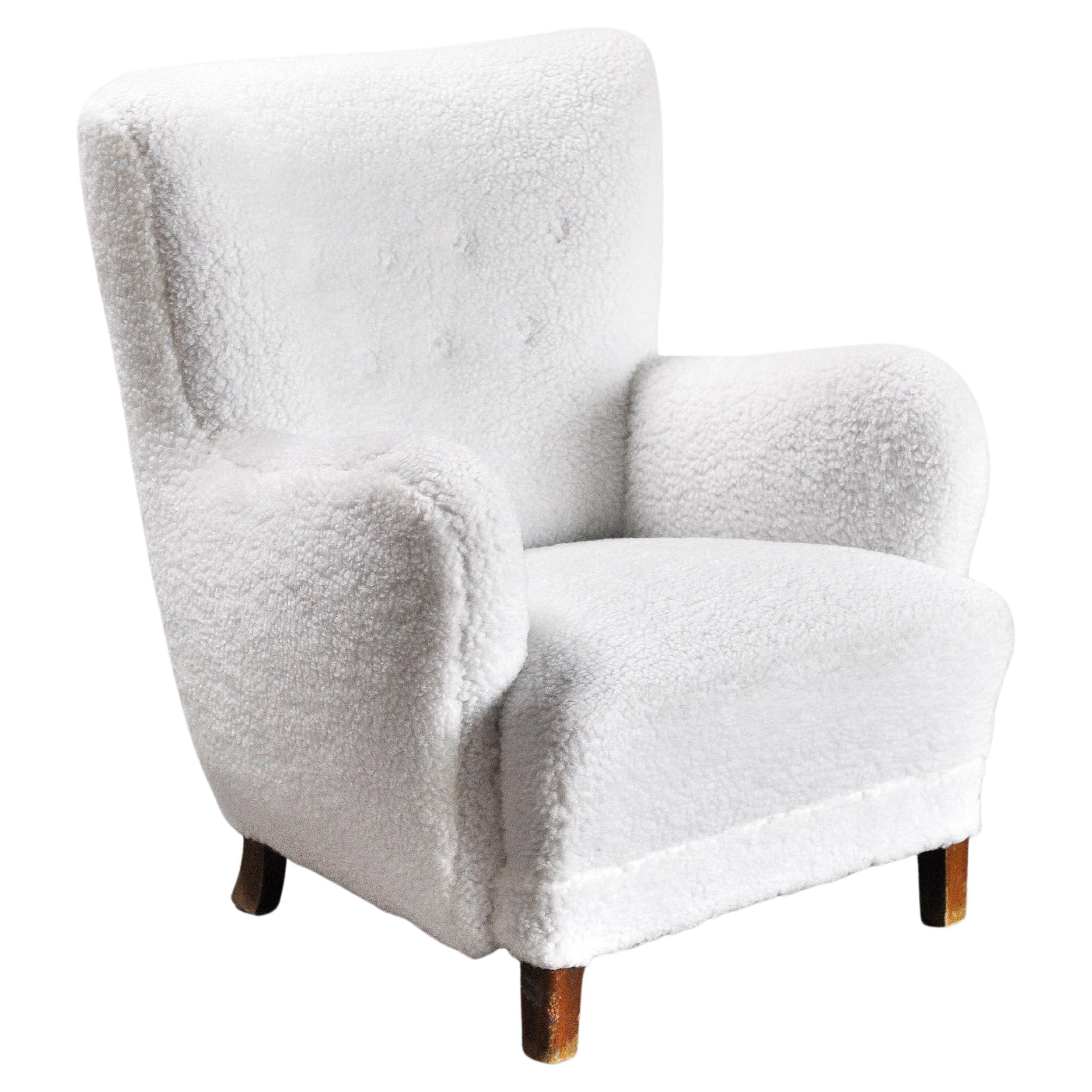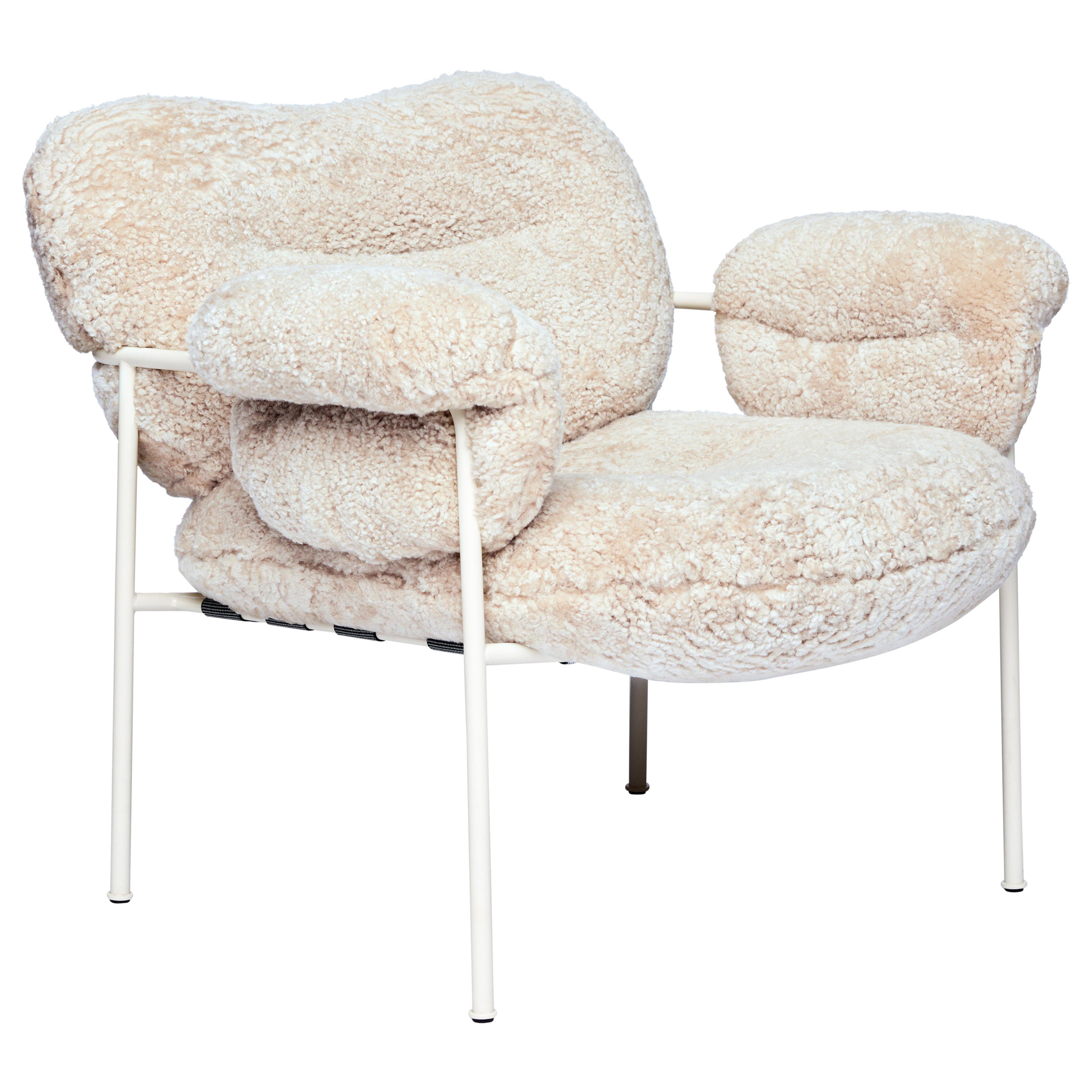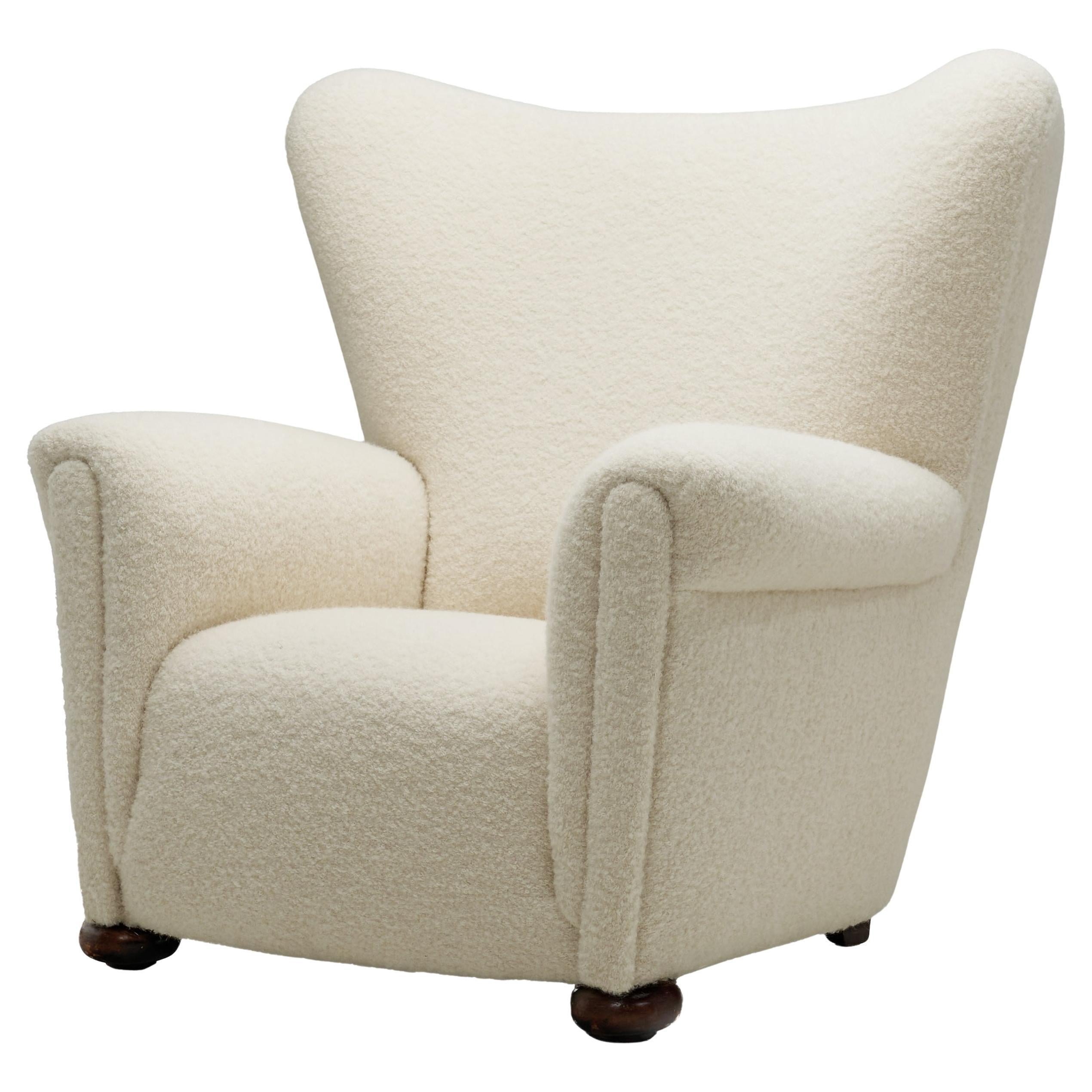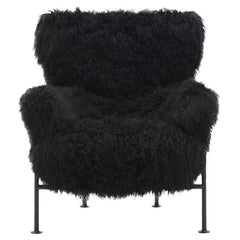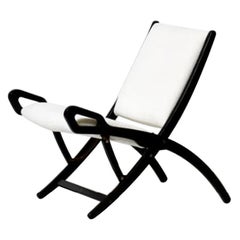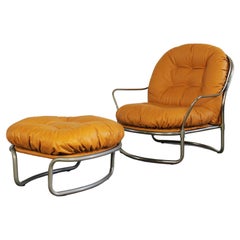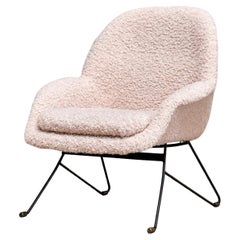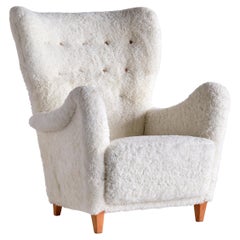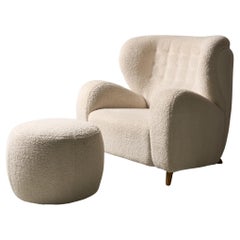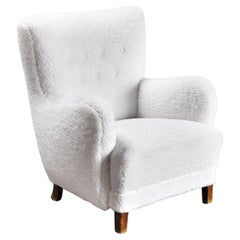Items Similar to Franco Albini PL19 or Tre Pezzi Armchair in White Wool by Poggi Pavia, 1950s
Want more images or videos?
Request additional images or videos from the seller
1 of 15
Franco Albini PL19 or Tre Pezzi Armchair in White Wool by Poggi Pavia, 1950s
$21,566.58
£16,051.94
€18,000
CA$29,540.83
A$32,855.85
CHF 17,156.30
MX$399,820.75
NOK 219,112.18
SEK 205,488.57
DKK 137,027.72
Shipping
Retrieving quote...The 1stDibs Promise:
Authenticity Guarantee,
Money-Back Guarantee,
24-Hour Cancellation
About the Item
PL19 also known as Tre Pezzi armchair with black enameled steel tube structure, upholstered in white Mongolian goat wool.
Designed by Franco Albini & Franca Helg for Poggi, Pavia produced since the late 1950s to 1970s.
After spending his childhood and part of his youth in Robbiate in Brianza, where he was born in 1905, Franco Albini moved with his family to Milan. Here he enrolled in the Faculty of Architecture of the Polytechnic and graduated in 1929. He starts his professional activity in the studio of Gio Ponti and Emilio Lancia, with whom he collaborates for three years. He probably had his first international contacts here
In those three years, the works carried out are admittedly of a twentieth-century imprint. It was the meeting with Edoardo Persico that marked a clear turning point towards rationalism and the rapprochement with the group of editors of “Casabella”.
The new phase that that meeting provoked starts with the opening of the first professional studio in via Panizza with Renato Camus and Giancarlo Palanti. The group of architects began to deal with public housing by participating in the competition for the Baracca neighborhood in San Siro in 1932 and then creating the Ifacp neighborhoods: Fabio Filzi (1936/38), Gabriele D’Annunzio and Ettore Ponti (1939).
Also in those years Albini worked on his first villa Pestarini.
But it is above all in the context of the exhibitions that the Milanese master experiments his compromise between that “rigor and poetic fantasy” coining the elements that will be a recurring theme in all the declinations of his work – architecture, interiors, design pieces . The opening in 1933 of the new headquarters of the Triennale in Milan, in the Palazzo dell’Arte, becomes an important opportunity to express the strong innovative character of rationalist thought, a gym in which to freely experiment with new materials and new solutions, but above all a “method”.
Together with Giancarlo Palanti, Albini on the occasion of the V Triennale di Milano sets up the steel structure house, for which he also designs the ‘furniture. At the subsequent Triennale of 1936, marked by the untimely death of Persico, together with a group of young designers gathered by Pagano in the previous edition of 1933, Franco Albini takes care of the preparation of the exhibition of the house, in which the furniture of three types of accommodation. The staging of Stanza per un uomo, at that same Triennale, allows us to understand the acute and ironic approach that is part of Albini, as a man and as a designer: the theme addressed is that of the existenzminimum and the reference of the project is to the fascist myth of the athletic and sporty man, but it is also a way to reflect on low-cost housing, the reduction of surfaces to a minimum and respect for the way of living.
In that same year Albini and Romano designed the Ancient Italian Goldsmith’s Exhibition: vertical uprights, simple linear rods, design the space. A theme, that of the “flagpole”, which seems to be the center of the evolution of his production and creative process. The concept is reworked over time, with the technique of decomposition and recomposition typical of Albinian planning: in the setting up of the Scipio Exhibition and of contemporary drawings (1941) the tapered flagpoles, on which the paintings and display cases are hung, are supported by a grid of steel cables; in the Vanzetti stand (1942) they take on the V shape; in the Olivetti store in Paris (1956) the uprights in polished mahogany support the shelves for displaying typewriters and calculators. The reflection on this theme arises from the desire to interpret the architectural space, to read it through the use of a grid, to introduce the third dimension, the vertical one, while maintaining a sense of lightness and transparency.
The flagpole is found, however, also in areas other than the exhibition ones. In the apartments he designed, it is used as a pivot on which the paintings can be suspended and rotated to allow different points of view, but at the same time as an element capable of dividing spaces. The Veliero bookcase, built in a single prototype in 1940, has two main uprights, made up of slender curved and juxtaposed bars, linked by a complex tensile structure. The lightened upright is also found in the LB7 bookcase, produced by Poggi in the 1950s.
Like the evolution of the upright, also the decomposition and recomposition of the architectural elements and the use of the module, constitute the elements of a method that tends to simplify the complex phenomena of design down to the essential nuclei.
Albini is a complete designer, whose work ranges from construction to design, from installations to urban planning. Among his masterpieces are: the Genoese Museums that change the way the public uses the work of art, the Pirovano Refuge in Cervinia, the Rinascente in Rome and the Milan Metro, which inspires the projects of the New York and Sao Paulo.
Silent, rigorous, ironic man, Albini works incessantly, supported by a moral code that accompanies him throughout his career. He firmly believes in the social role of the architect as a profession at the service of the people. He considers it the very reason for its existence.
- Creator:Poggi (Manufacturer),Franco Albini and Franca Helg (Designer)
- Dimensions:Height: 35.44 in (90 cm)Width: 29.14 in (74 cm)Depth: 25.6 in (65 cm)
- Style:Post-Modern (Of the Period)
- Materials and Techniques:
- Place of Origin:
- Period:
- Date of Manufacture:1950s
- Condition:Reupholstered.
- Seller Location:Montecatini Terme, IT
- Reference Number:1stDibs: LU5304230817462
About the Seller
4.9
Vetted Professional Seller
Every seller passes strict standards for authenticity and reliability
1stDibs seller since 2020
123 sales on 1stDibs
Typical response time: 1 hour
- ShippingRetrieving quote...Shipping from: Borgo a Buggiano, Italy
- Return Policy
Authenticity Guarantee
In the unlikely event there’s an issue with an item’s authenticity, contact us within 1 year for a full refund. DetailsMoney-Back Guarantee
If your item is not as described, is damaged in transit, or does not arrive, contact us within 7 days for a full refund. Details24-Hour Cancellation
You have a 24-hour grace period in which to reconsider your purchase, with no questions asked.Vetted Professional Sellers
Our world-class sellers must adhere to strict standards for service and quality, maintaining the integrity of our listings.Price-Match Guarantee
If you find that a seller listed the same item for a lower price elsewhere, we’ll match it.Trusted Global Delivery
Our best-in-class carrier network provides specialized shipping options worldwide, including custom delivery.More From This Seller
View AllFranco Albini Pl19 or Tre Pezzi Armchair in Black Mongolian Wool for Poggi Italy
By Poggi, Franco Albini and Franca Helg
Located in Montecatini Terme, IT
PL19 also known as Tre Pezzi armchair with black enameled steel tube structure, upholstered in black Mongolian goat wool.
Designed by Franco Albini & Franca Helg for Poggi, Pavia...
Category
Vintage 1950s Italian Other Armchairs
Materials
Steel
$21,566
Free Shipping
Gio Ponti Ninfea Folding Chairs in Wood and White Fabric by Reguitti 1960s Italy
By Fratelli Reguitti, Gio Ponti
Located in Montecatini Terme, IT
A Ninfea (or Pieghevole Ninfea) folding lounge chair with a structure in the wood, seat, and back in woven white fabric and brass hinges.
The Ninfea chair...
Category
Vintage 1960s Italian Mid-Century Modern Chairs
Materials
Brass
Rino Maturi Nuvolone Living Room Set in White Boucle by MIMO Padova 1970s Italy
By Mimo Padova
Located in Montecatini Terme, IT
The living room set is composed of a Nuvolone modular sofa (with five modules) and a large coffee table (with storage units) which can be arranged to your liking.
The sofa and the t...
Category
Vintage 1970s Italian Mid-Century Modern Living Room Sets
Materials
Bouclé, Plastic, Foam
Carlo de Carli 915 Armchair with Footrest in Metal and Leather by Cinova 1970s
By Carlo De Carli
Located in Montecatini Terme, IT
Set composed by a 915 armchair with a footrest both pieces are made in chromed metal and padded leather.
This set was designed by Carlo de Carli and produced by Cinova in the 1970s.
...
Category
Vintage 1970s Italian Mid-Century Modern Lounge Chairs
Materials
Metal
Tobia & Afra Scarpa Armchair in Wood and Padded Leather by Maxalto 1975
By Maxalto, Afra & Tobia Scarpa
Located in Montecatini Terme, IT
A single armchair with a frame in wood and cushions upholstery with leather (cognac shade) designed by Tobia and Afra Scarpa and manufactured by Maxalto from the Artona series 1975 c...
Category
Vintage 1970s Italian Mid-Century Modern Armchairs
Materials
Leather, Wood
Rino Maturi Nuvolone Living Room Set in White Boucle by MIMO Padova 1970s Italy
By Mimo Padova
Located in Montecatini Terme, IT
The living room set is composed of a Nuvolone modular sofa (with six modules) which can be arranged to your liking.
The sofa and the tables present a polyurethane foam upholstered s...
Category
Vintage 1970s Italian Mid-Century Modern Living Room Sets
Materials
Bouclé, Plastic, Foam
You May Also Like
Augusto Bozzi Attributed Armchair in Nude White Bouclé, Saporiti, Italy, 1950s
By Fratelli Saporiti, Augusto Bozzi
Located in The Hague, NL
This rare armchair was produced in Italy during the 1950s, with its design attributed to Augusto Bozzi, who created several very similar metal-framed lounge chairs for Saporiti durin...
Category
Vintage 1950s Italian Mid-Century Modern Armchairs
Materials
Brass, Steel
Otto Schulz Armchair in White Sheepskin and Beech, Boet, Sweden, 1940s
By Boet, Otto Schulz
Located in The Hague, NL
This rare wingback chair was designed by Otto Schulz and produced by Boet in Goteborg, Sweden in the 1940s. The elegant organic lines of the design create a striking silhouette. Its ...
Category
Vintage 1940s Swedish Scandinavian Modern Armchairs
Materials
Leather, Sheepskin, Upholstery, Wood, Beech
Finnish White Comfy Marta Blomstedt Armchair with Its Matching Footstool, 1960's
By Märta Blomstedt
Located in Brussel, BE
This iconic wing chair was designed by Finnish architect Marta Blomstedt for the foyer of the Hotel Aulanko in Hameenlinna, Finland. It was heavily inspired by Danish designer Flemin...
Category
Vintage 1960s Finnish Mid-Century Modern Armchairs
Materials
Fabric, Wood
Fritz Hansen Model 1669 Lounge Chair In White Wool, Denmark 1940's
By Fritz Hansen
Located in Antwerp, Antwerp
Iconic easy chair made by Fritz Hansen in the 1940's or early 1950's. This model is rarely seen and one of the 1669 variants. It was newly upholstered in a shearling white wool and h...
Category
Vintage 1950s Danish Mid-Century Modern Lounge Chairs
Materials
Sheepskin, Wool, Beech
Bollo Armchair by Fogia, Mohawi Sheepskin, White Steel
By Andreas Engesvik, FOGIA
Located in Paris, IDF
Bollo Armchair by Andreas Engesvik for FOGIA
Model shown on main images: White steel legs + Fabric: Sheepskin Mohawi
Width: 81cm /32in
Depth: 81cm /32in
Height: 71cm /28in
Seat Hei...
Category
21st Century and Contemporary Polish Organic Modern Armchairs
Materials
Steel
European Armchair in White Upholstery, Europe 20th Century
Located in Utrecht, NL
This beautiful armchair is a great representation of the quality and craftsmanship of European master cabinetmakers from the mid-20th century period.
Cabinetmaker armchairs may see...
Category
20th Century European Mid-Century Modern Armchairs
Materials
Fabric, Wood
More Ways To Browse
Vintage Gyms
Mongolian Fur
Ancient Coins
Italian Typewriter
Lancia Emilio
Olivetti Typewriter
Gio Ponti Bar Set
Black Mongolian Fur
Tre Pezzi
Vintage Mongolian Fur
White Goat Fur
Olivetti Calculator
Poggi Pavia
Franco Albini Poggi Pavia
Franco Albini Tre Pezzi Armchair
Franco Albini Tre Pezzi
San Siro
Franco Albini Lb7
